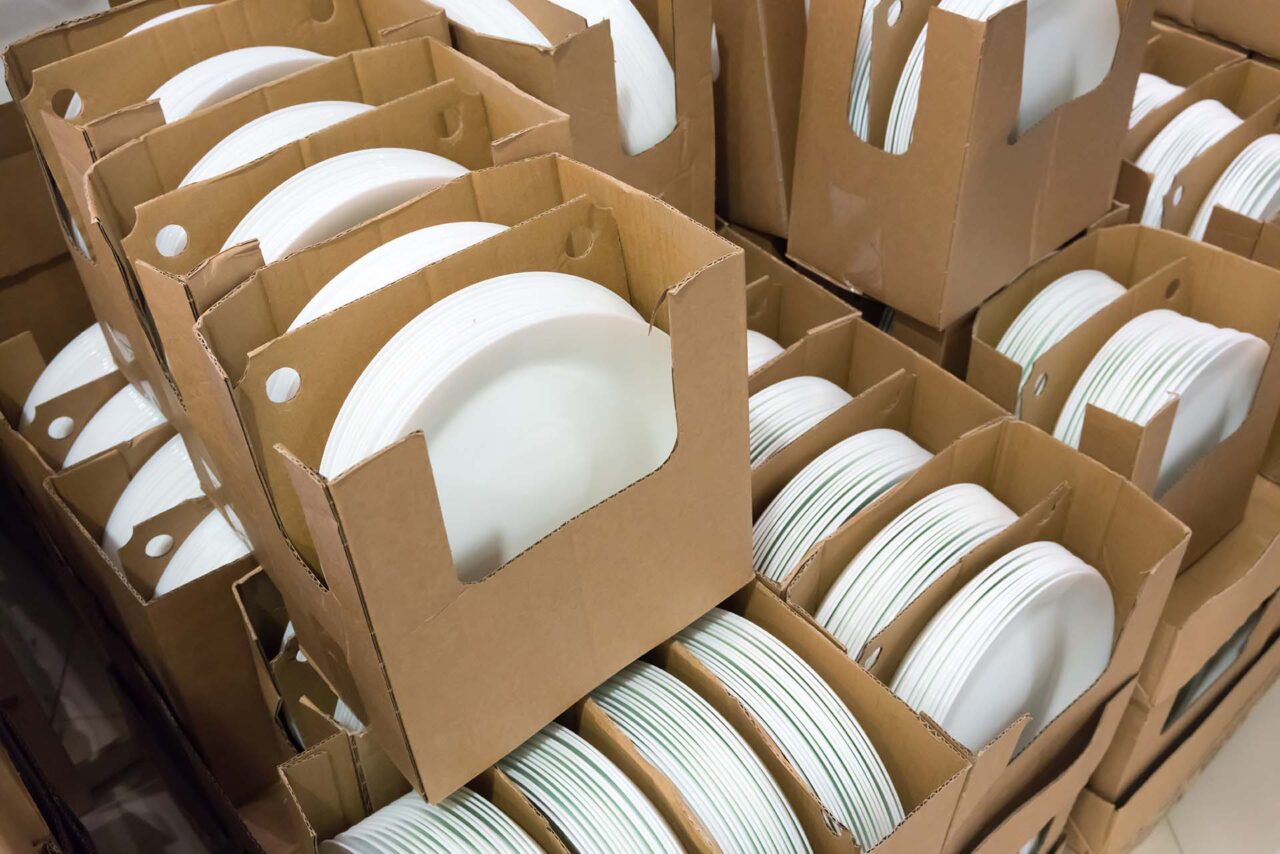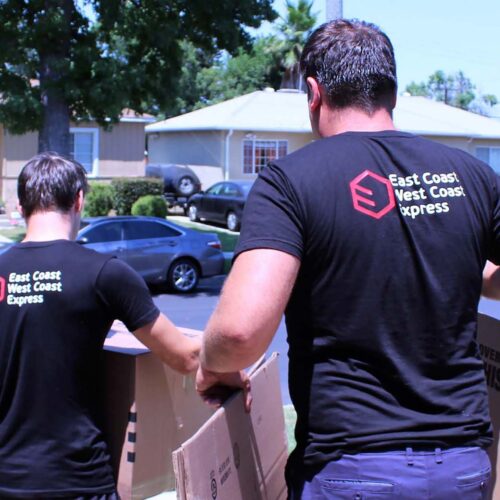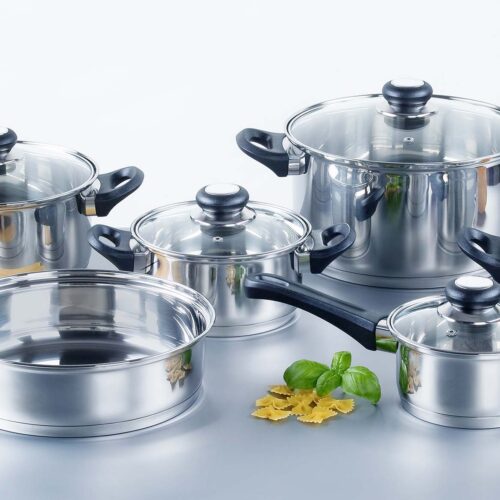

On average, every American moves 12 times in their life. Whether you’ve moved before or this is your first move, you probably know that the most daunting part is dealing with the kitchen. When packaging begins, the first thing you will ask yourself will be how to pack plates for moving. Even if this is not nuclear science, the best way to pack plates is one that prevents any losses and damages.
Organizing a move is not an easy thing. You will have a lot of obligations, from choosing a long-distance moving company to finding a new job. And on top of that, you have to deal with protecting your belongings for safe transportation. But there are professional relocation tips you can implement to have a faster and stress-free move.
Decide What You Will Pack and What Toss Away
No matter if you are relocating to a smaller house or not, one of the things you will have to do before the move is to downsize a bit. This way you will have fewer things to bring with you, and therefore a more efficient relocation. Another great benefit of relocating is that you get to start fresh and get rid of all the things that bother you, from a job that doesn’t fulfill you to the home that has become overcrowded.
And this may not seem like some big deal, but there is something liberating in getting rid of things that have been in your way for ages. And yes, damaged unpaired platters are among those things. Alongside plastic containers, broken pots, pans, truncated cups, or souvenir mugs from vacation you don’t even remember, now you get the chance to throw everything away or to donate.
Get the Right Supplies
Now that you are done with downsizing, you will be able to purchase some packing materials. You will know exactly what kind of supplies you require and how many. On the other hand, if you hire East Coast movers for a packing service, you will skip this step because they will bring all the necessary supplies. But if you hire movers only for long-distance moving services, here are supplies you will have to purchase:
- Boxes – Ensure you get high-quality cardboard packages, mostly medium-sized, although you’ll require a couple of large and a few really small ones.
- Bubble wrap – It’s the ultimate cushioning material, very versatile. If you want to be certain nothing gets damaged, envelop it in bubbles.
Packaging paper – You’ll use it both for enveloping items and filling any gaps inside the containers. - Plastic wrap – It’s a life savior for quick packaging of drawers and packages without lids.
Printed labels or a marker – Want to know the ultimate unpacking hack? Label the packages by room or by the contents. - Packaging tape and heavy-duty tape gun – Without it, you won’t be able to secure each container properly.
Foam peanuts, pool noodles, and anything else you’ll require for filling the packages or securing the edges of your breakables.
Or Take Supplies You Have at Home
If you wish to save on relocation costs, you can take some supplies at home as a protective material when boxing up dishes. For example, you can use a newspaper instead of packing paper or wrap your trays in shirts or towels. In this manner, you will deal with your clothing and dishes at the same time.
You Will Have to Prepare
Relocating to a new home and packaging the entire house demands a lot of preparation if you wish to finish everything quickly and properly. One thing you can do when buying boxes is to buy a couple of boxes specially designed for dishes. They are stronger and more durable than regular boxes. Also, start with all preparations at least two weeks in advance. In this manner, you will have time to arrange everything, wash your platters, and get the necessary supplies.
Clear One Place in Your Home for Packing
This step will not be only useful for packing plates for moving but other belongings too. Even if you are last-minute relocating, this step will be more than welcome, so don’t skip it. Choose one area in your home which you don’t use that often, like the garage or basement. Clear that area and make a working station. Here you will put all the packaging supplies and things you must box up. Clear workshop table if you have one or put some table inside so you can use it for wrapping items and boxing them up.
Cleaning Before Packaging Is Must Do
Never put dirty dishes in boxes, thinking you will clean them once you relocate. When cross-country moving is underway, a lot of unpredictable things can happen, like bad weather or that your new place is not ready to move into. Your belongings may end up with your West Coast movers and their storage units for some time, and dirty dishes can cause a lot of sanitary problems. But even if your dishes are clean, it would be good to give them some deep cleaning before your move. This way, you get to put shiny trays in your cabinets, and your unpacking after a move will be much more pleasant.
Leave Some Dishes Aside for the Relocating Day
There is a general rule saying that the kitchen should be packed last, but you don’t have to do so. People do this because they know they will require kitchen items until relocation day. But you can actually pack most of your kitchenware before and just leave some necessities for the last. So put one box aside and pack your necessities before you head off. One pot and one pan and dining set for each family member should be enough.
Put Some Plates in Your Box of Essentials
As you already know, you will have to make a container of relocation essentials. In essence, necessities you will need once you relocate for the first couple of days. And platters must make their way to this box as well. Choose your platters wisely. You will need a dish good enough for soup and solid food. This will save you some space. And you will not have to worry about what kind of meal to make because from these platters you can eat both omelet and noodle soup.
How to Pack Plates for Moving – Step by Step Guide
Now is time to learn how to pack plates for shipping. The first thing you must do is make an inventory list of all your household items, including the cook’s room, and create a schedule in which order you will box up your belongings. And once turn for platters arrives, here are the steps to follow:
- Step 1 – Assemble your boxes to reinforce them. Take strong contractor duct tape to reinforce the bottom, sides, and top. Do not save on material here because you will need an extra-strong container that can hold up heavy items. You don’t want to risk the container tearing apart under the weight and losing everything inside.
- Step 2 – Make crumpled balls of paper and line them at the bottom of the container. You can also put towels or sheets as a protective layer.
- Step 3 – Place your paper on a flat surface or table, and put platters you plan to wrap on the side. Put each plate on top of a pile of paper and envelop every piece separately.
- Step 4 – Once you cover each piece, you can place it in the container. Put them vertically, not horizontally. If they are placed horizontally, they can break under pressure. Vertically, most pressure will be on the side of the platers.
- Step 5 – Put some cushioning layer on top of the container and close it. Don’t forget to reinforce the container’s top and sides once you are done.
- Step 6 – Take your sticky label with a “fragile” sign and put it on all four sides of the container. In this manner, no matter in which direction the container faces, long-distance movers will know that fragile stuff is inside.
Packing Other Kitchen Items
If you know how to pack plates, boxing up other belongings from your cookroom will not be a problem because the process is similar in most steps we listed above. Still, some things can be done differently. For example, if you are boxing up bowls, you can wrap each bowl then stack them. Stack five bowls together and then envelop the whole stack with two layers of paper and tape it so the paper doesn’t unroll.
Best Practice for Packaging Glasses
When it comes to glasses, there are several things you must know. First, never put glasses in one another. Secondly, glasses should be placed in a container on the side. Also, a quite thick layer of cushioning should be between each layer and between glasses (there shouldn’t be any hollow space in a container). If you are worried about your champagne and wine glasses, you can buy sectioned containers and transport them there safely. Just don’t forget to envelop each glass before placing it in a sectioned container. If you have china you wish to move, you can extra protect it with bubble wrap.
What to Do With Pots and Pans
Boxing up pots and pans will most definitely end up on your moving to-do list. So why not go through the steps you will need to take to relocate them properly. First thing first, you have a chance to inspect every piece and see which one to keep and what to throw away. If there are scratches at the bottom of any pot or pan, throw that away immediately because residues from scratches can cause you a great deal of harm if you consummate constantly. On the other hand, if the dish is dirty from the outside, this is not a reason to toss them away. There are tricks on how to clean these burns and grease. It would be good to clean every dish when relocating. Here is a video on how to remove burns from your pots and pans.
Don’t Feel Like Doing This Alone – Hire Cross Country Movers Instead
As you can realize, long-distance moving will take a lot of your time and energy, from finding an auto transport service to finding a new job. There are a lot of things to consider when relocating to another state, and a portion of those obligations can be outsourced to cross-country moving services. So why not take this advantage? In this manner, you will be able to deal with things that really matter, like house hunting or scouting for your kids’ new schools. With the help of professionals, you will have time and, most importantly, energy to deal with those things at your own pace. At the same time, movers will deal with your platters and other items.









